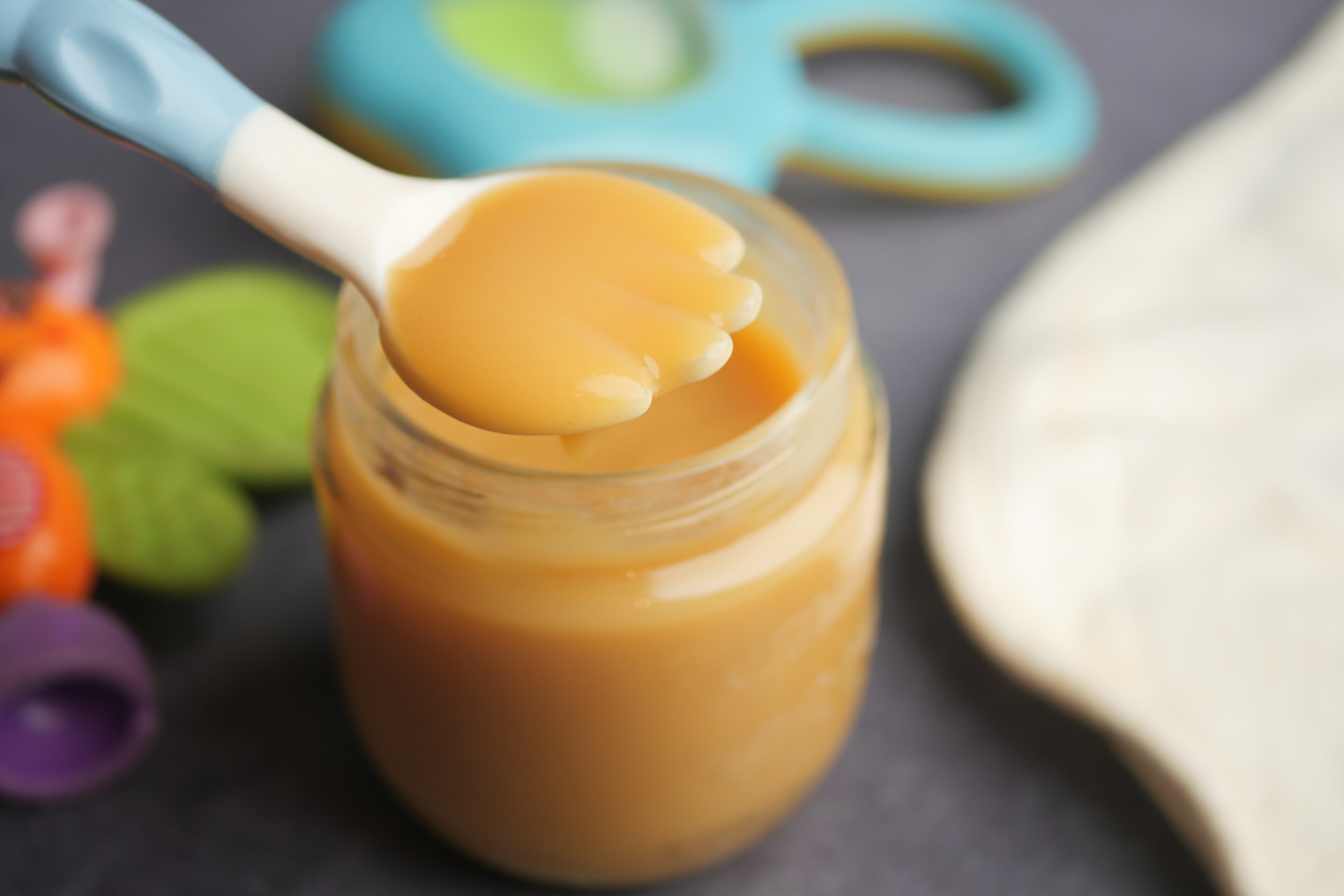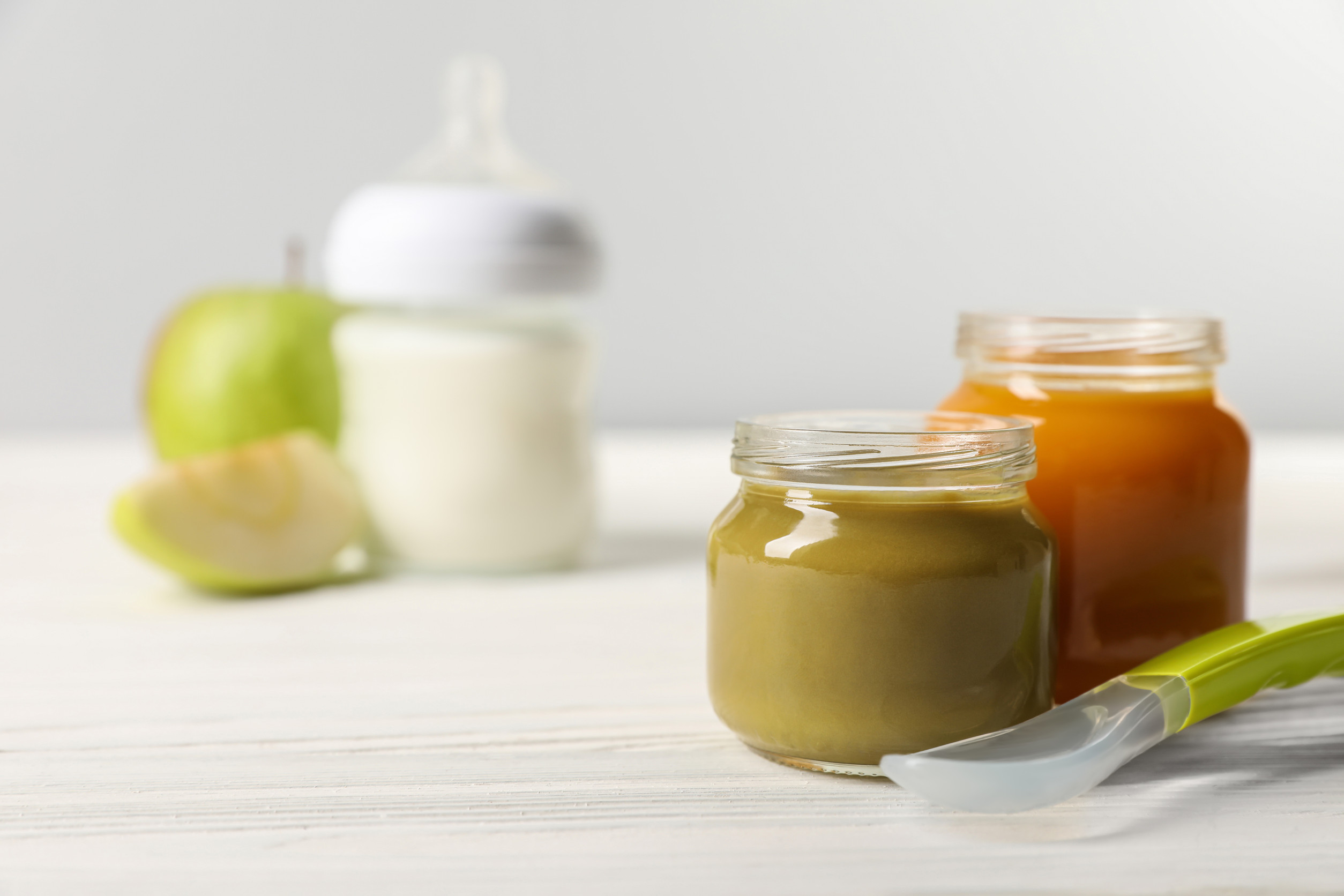Parents expect baby food to be safe and gentle, but recent investigations reveal some popular products may harbor hidden hazards. From heavy metals to pesticides, certain baby foods have raised red flags that require your attention. Understanding which items are under scrutiny helps you make safer choices and protect your child’s health. This article explores eight commonly purchased baby foods facing investigations for harmful ingredients. Read on so you can shop smarter and feed your baby with confidence.
1. Apple Cinnamon Puree Pouches
In late 2023, WanaBana apple cinnamon puree pouches were linked to elevated lead levels in children’s blood tests. The FDA confirmed that some pouches contained dangerous amounts of lead and chromium, sparking recalls across brands like Schnucks and Weis. Since then, brands sourcing similar ingredients have come under investigation. These pouches are still on many store shelves, so parents should check UPCs and avoid questionable batches. Always verify recalls before feeding your child flavored puree pouches.
2. Target’s Good & Gather Veggie Purees

Target recalled about 25,600 units of its Good & Gather Baby Pea, Zucchini, Kale & Thyme Vegetable Puree over elevated lead levels. State health departments and the FDA flagged lead, which—despite low risk—can cause long-term adverse effects in young children. Even products marketed for babies aren’t immune to contamination. Parents should inspect pantry inventories and return potentially affected batches. Awareness can help avoid toxic exposure during critical growth phases.
3. Publix Greenwise Fruit & Veggie Pouches
Publix issued a voluntary recall of Greenwise Pear, Kiwi, Spinach & Pea pouches after testing revealed 13.4 ppb of lead, over FDA’s 10 ppb recommended limit. Though no illnesses have been reported, lead exposure is particularly harmful to developing brains. The recall impacts stores in eight states, and refunds are available at checkout. If your child has consumed this product, consult your pediatrician. Regularly check grocery inventories for updates.
4. Baby Formulas Found with Heavy Metals
Consumer Reports recently analyzed baby formulas and found inorganic arsenic in seven formulas and lead in 18 out of 41 tested. These metals are linked to cognitive development issues, and exposure at such a young age can have long-term effects. Manufacturers maintain they test products and ensure safety, but the findings point to inconsistencies in supply chains. Until industry standards tighten, parents should compare formula results and consult medical providers. Transparency in testing is key.
5. Pesticide Residues in Non‑Organic Baby Foods
An EWG report discovered nine types of pesticides across dozens of non‑organic baby foods. While many of the most toxic chemicals have been phased out, traces remain in processed products. Eating a varied diet and choosing organic options when possible are practical steps families can take. Experts note that the highest pesticide levels appeared in non-organic purees and snacks. Reducing exposure helps support healthier development.
6. Brands Falling Short of California’s Lead Standard
Reuters reviewed more than 1,750 product test results and found brands like Gerber, Plum Organics, and Beech-Nut exceed California’s low lead limit of 0.5 μg/day. Although these makers may meet federal FDA standards, the stricter California guidelines highlight potential problems. Some manufacturers average results over multiple batches, which critics say masks bad lots. Parents may use QR codes (especially on products sold in California) to check individual batch results. Transparency matters—and better data helps you make safer choices.
7. Sugary “Baby” Meals with Misleading Labels
A UK study found that 41% of baby meals had excessive sugar levels, with some pouches containing up to 71% of calories from sugar. Meals labeled for infants under six months are particularly concerning. While not directly toxic, high sugar intake early can shape unhealthy habits and metabolic issues later. Products may pass nutrient grading, yet still be inappropriate for babies. Checking ingredient lists and limiting sweet purees helps guardians prioritize nutrition over convenience.
8. Heavy Metals in Baby Cereals and Yogurts

The FDA’s “Closer to Zero” initiative and guidance published in January 2025 aim to limit lead levels to 10 ppb in processed baby foods like yogurts, custards, and mixed purees. But advocates warn these guidelines exclude many products like formulas, snacks, and beverages. That leaves gaps where contamination remains possible. Until regulations are stronger, parents should diversify foods and rotate brands responsibly. Advocating for comprehensive testing keeps pressure on manufacturers.
What Every Parent Should Do Next
Experts agree: variety is your best defense. Rotate between fruits, vegetables, grains, and proteins, choosing organic where available. Stay informed on recalls and test results by scanning labels or using QR code tools, especially for purchases from California or recalled batches. Don’t rely solely on marketing claims; dig deeper into ingredient lists. When in doubt—or if you’ve served a flagged product—reach out to your pediatrician for guidance and developmental screening.
Have you ever discovered a recall or concerning ingredient in your baby’s food? Share your experience below to help other parents stay safe!
Read More
Why Some Parents Are Ditching Baby Food Pouches—Are They Really That Bad?
9 Foods That Quietly Disappeared After Health Laws Changed
The post 8 Baby Foods Being Investigated for Harmful Ingredients appeared first on Grocery Coupon Guide.







